Megan Curran is a librarian who works with rare books in the history of medicine and finds herself often musing about mortality as a result. She is also an amateurish photographer and took the photos in this post.
*~*~*~*~*~*~*~*~*~*~*~*~*~*~*
I couldn’t wait to get away from it all — the city, my work, my quotidian preoccupations. I had just gotten back from the Archivists & Librarians in the History of the Health Sciences conference the night before, where I communed with my fellow historians of medicine (truly my people, that lot). As much fun as I had, I was more than happy to put it all behind me and hit the winding road for Yosemite National Park. But sometimes, like the spectre of death itself, those preoccupations catch up with you just when you least expect them. But probably unlike death, sometimes their untimely approach can be quite welcome. So was the case when I happened upon this sign.
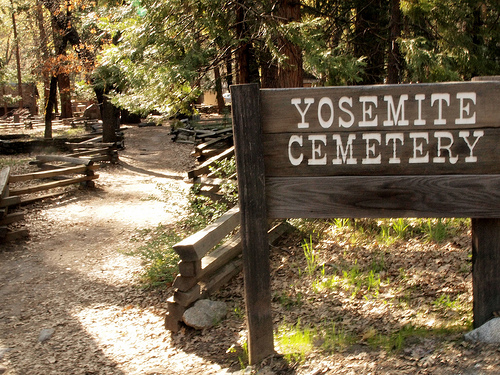
Of course, I had to indulge my morbid curiosity and go traipsing about this beautiful, secluded cemetery and (never one to leave a gravestone unturned) learn a little about the place after the fact. A death nerd is a death nerd, even on vacation.
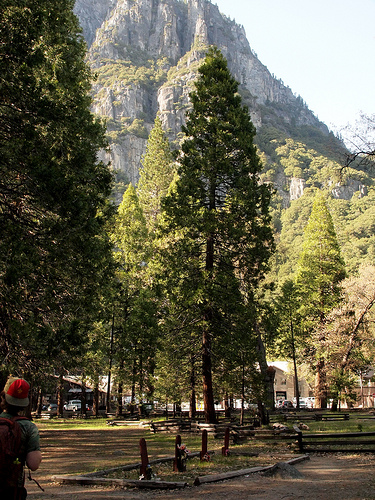
Pioneer graves were scattered across the Yosemite Valley in the 19th century when the park was still maintained by the nascent state of California. Abraham Lincoln declared Yosemite a national park in 1864, and graves were moved to this cemetery roughly five years later, though the fences weren’t erected nor the cedars planted until 1906.
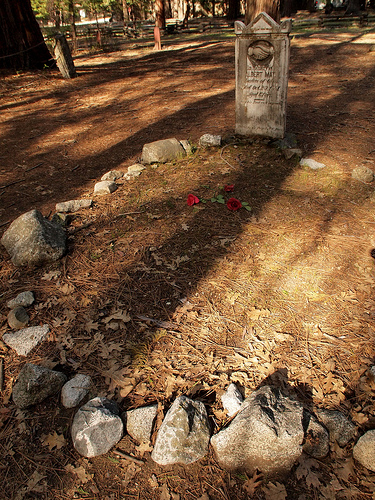 The Miwok tribe native to the Yosemite area did not actually bury their dead, but practiced cremation via elaborate ceremonies where mourners would singe their hair and wail until midnight; elder women streaked their faces with the char from burnt laurel berries. The name Yosemite comes from the western Miwok words “yohemite” and “yohometuk,” a warning about their neighbors in the valley: “some of them are killers.”
The Miwok tribe native to the Yosemite area did not actually bury their dead, but practiced cremation via elaborate ceremonies where mourners would singe their hair and wail until midnight; elder women streaked their faces with the char from burnt laurel berries. The name Yosemite comes from the western Miwok words “yohemite” and “yohometuk,” a warning about their neighbors in the valley: “some of them are killers.”
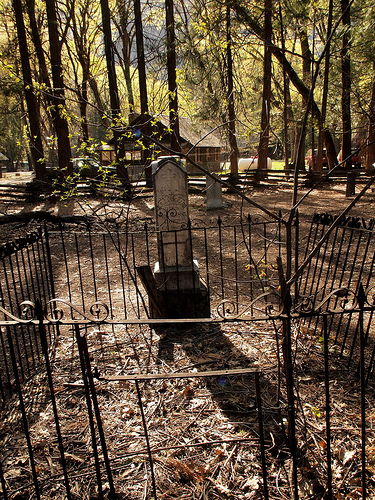 In keeping with the Miwok’s warning, some of those in Yosemite Cemetery were, in fact, murdered. There lies Justice of the Peace Leonidas G. (“Dick”) Whorton, shot in 1887 by a tough customer named Abel Mann. Mann later tried to kill his wife by slitting her throat, and eventually ended his own life when he was backed against a wall by a posse howling for his blood. Poor George Ezra Boston was burned to death in his toll booth by the area’s most notorious murderer of the time, Piute George, who eventually died in San Quentin after a lifetime of misdeeds.
In keeping with the Miwok’s warning, some of those in Yosemite Cemetery were, in fact, murdered. There lies Justice of the Peace Leonidas G. (“Dick”) Whorton, shot in 1887 by a tough customer named Abel Mann. Mann later tried to kill his wife by slitting her throat, and eventually ended his own life when he was backed against a wall by a posse howling for his blood. Poor George Ezra Boston was burned to death in his toll booth by the area’s most notorious murderer of the time, Piute George, who eventually died in San Quentin after a lifetime of misdeeds.
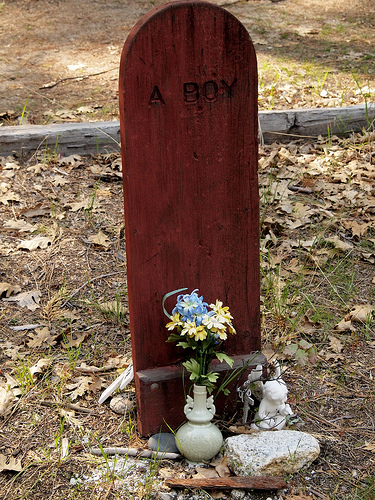
But most of the denizens of Yosemite Cemetery did not meet such dramatic ends, at least, as far as history can tell us. Many are rendered anonymous, either because they died while camping or passing through and were left there unidentified, or they didn’t live long enough to be named in the first place. The grave that reads simply “a boy” is said to be the first to be buried in this cemetery. There’s something touching about the juxtaposition of the the unusually large redwood headstone and the plastic flowers with which it is adorned.
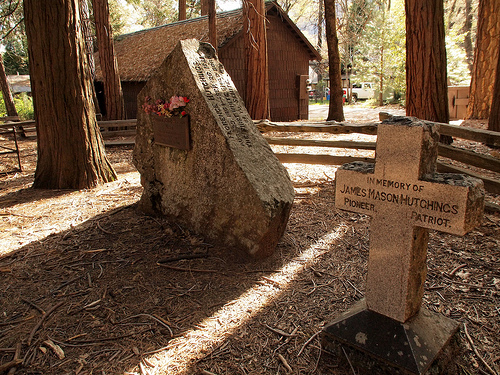
Others interred in Yosemite Cemetery are some of the most famous pioneers to live on this land. Early land custodian James Mason Hutchings brought tourism to Yosemite in 1855 and popularized its beauty in his book In the Heart of the Sierras. His daughter Florence, the first white child born in Yosemite (1864), is buried next to him with a granite headstone that mimics the craggy rocks that peak overhead.
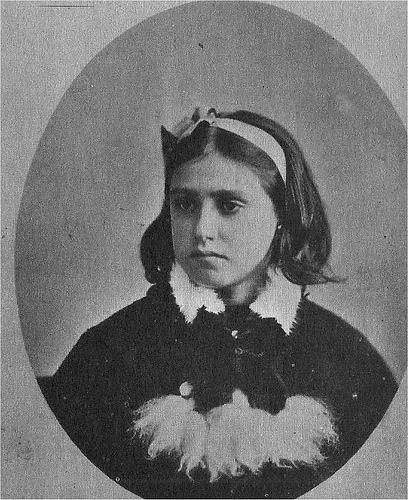
Florence Hutchings (or Floy as she was known around the valley) led a remarkable, though all too brief, life in the wild Yosemite Valley. Just a brief walk from the cemetery is the chapel where she spent most of her days, strewing it with flowers, keeping the pews tidy, and communing with God and nature.
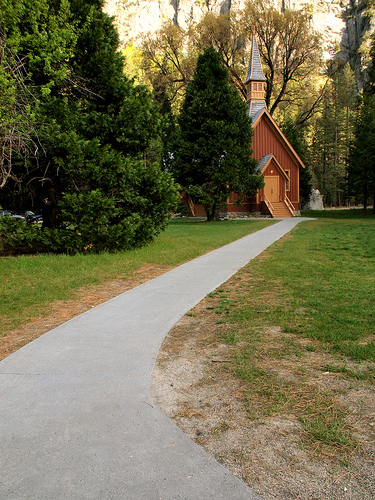
The reverent but lively teenager expressed her feelings about this beautiful place in poetry:
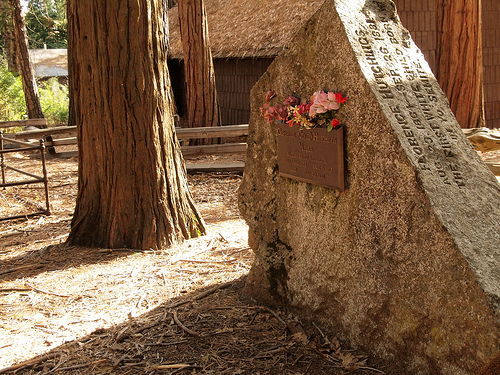
‘Beautiful, Wonderful’ how come you are? for what has nature caused this awe inspiring deep canon and high towering peaks for it is to remind one there is a God, and that his works are the works of nature? that his works are wonderful beyond comprehension.
A fall killed the beloved daughter of the valley at only 17, and Mount Florence was eventually named in her honor.
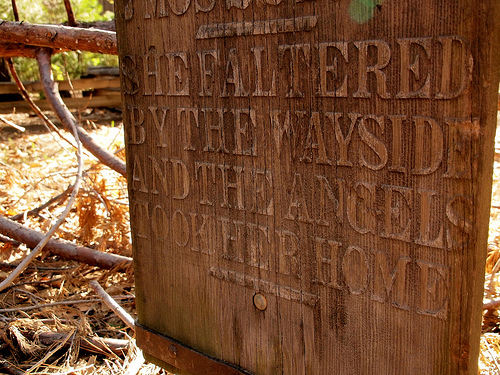
By far the most beautiful grave in Yosemite Cemetery belongs to another teenager who succumbed to a fall. Effie Maud Crippen was aged “14 years 7 mos 22 days” according to her tombstone, when “she faltered by the wayside and the angels took her home.”
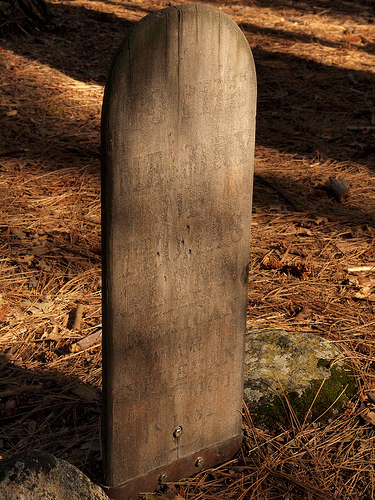
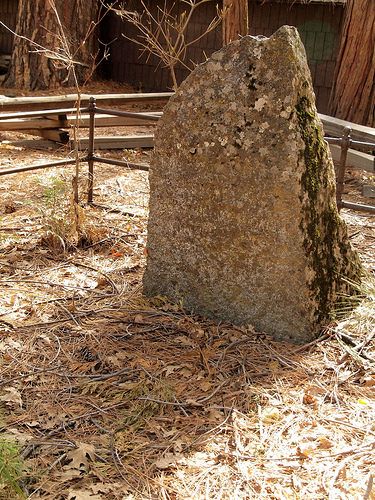
For being from 1881, the typography and artfully distressed wood of Effie’s tombstone is eerily stylish at the present time. It looks like a sign that could have been purchased in Silver Lake yesterday. The years have not treated other gravestones there so kindly, however. Some wooden grave markers are sunbleached and decayed to the point that they are totally unreadable. Mosses and fungi cover a number of the stone markers at the site, obscuring their inscriptions. But it’s this beautiful decay surrounded by the grandest natural beauty that makes Yosemite Cemetery such a serene setting. One can certainly imagine worse places to spend eternity.
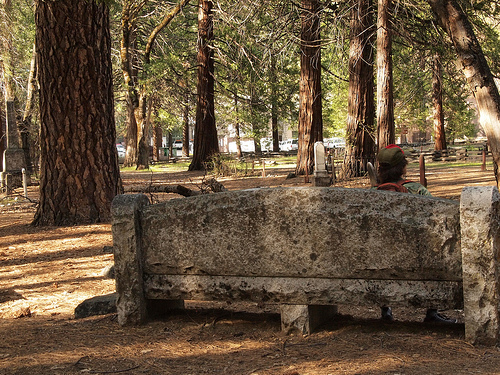
***
